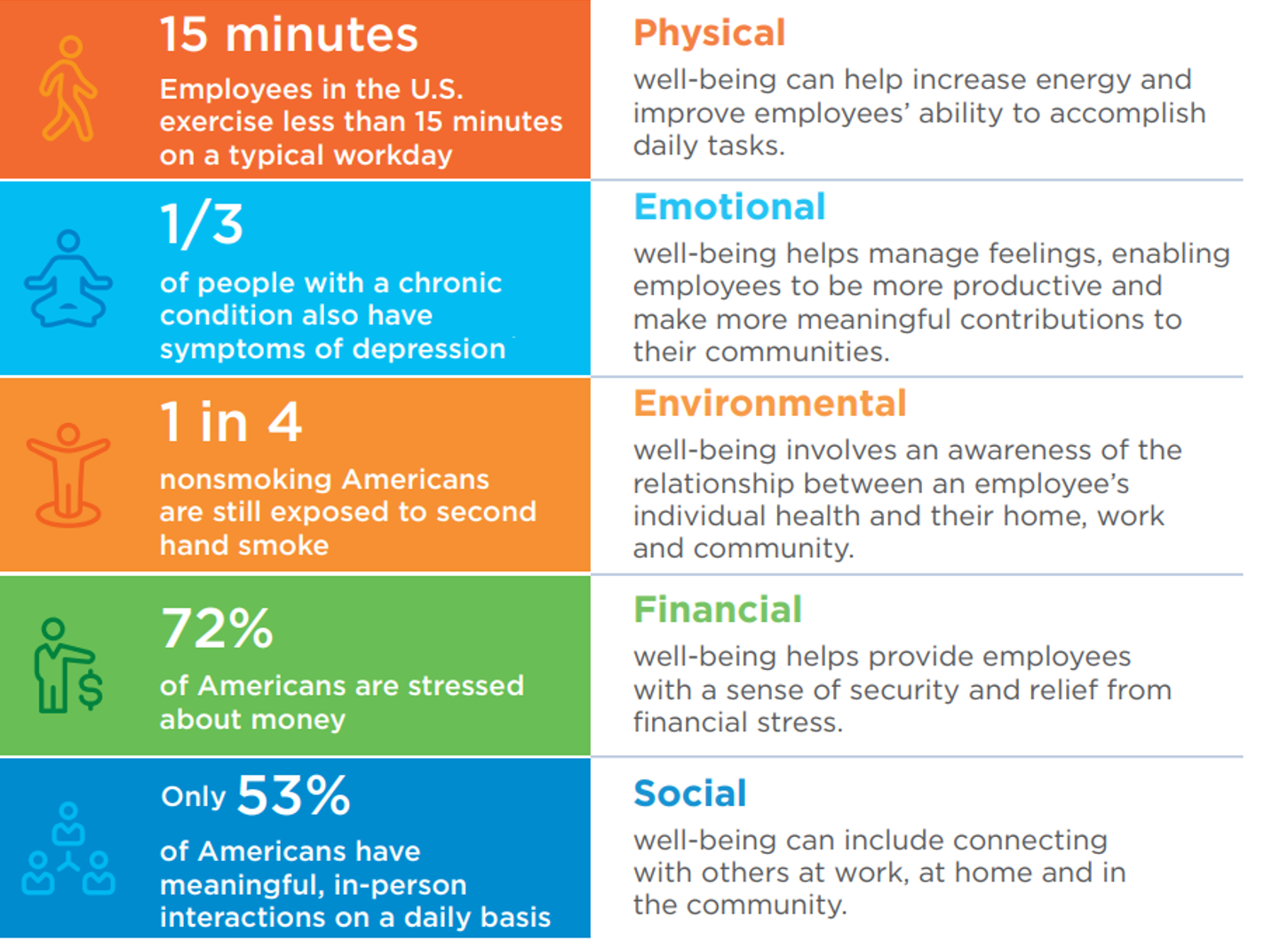We need to move beyond looking only at physical health – and understand that the mind and the body are connected and both contribute to health and well-being.


By Sandra Shaklan, LCSW-C, Innovation Lead, Workplace Well-being Services, Cigna
The world has certainly changed in the last two years: A pandemic. Social isolation. Job loss. Illness. Death. An uncertain economy. All of these things have taken a toll on the American workforce.
Today, employees throughout the United States are more likely to report feelings of depression and burnout than they were before the pandemic. In addition, 40% of employees and business leaders rank stress, burnout and other mental health issues as the biggest barrier to their organization’s bottom line.
The onus is on employers to take an integrated and proactive approach to fostering a healthy workforce. We need to move beyond looking only at physical health – and understand that the mind and the body are connected and both contribute to health and well-being. Cigna claims data demonstrates this connection: 92% of adults with mental disorders also have medical conditions. At the same time, employees’ expectations have shifted. They now expect greater health and well-being support from their employers.
Healthy Mind + Body = A Healthy Workforce
Employee mental health is being impacted like it never has been before and this also impacts the workplace. Companies that expand their definition of a healthy workforce and provide holistic support through benefits and employee well-being experiences stand to win in the end.
While causes and symptoms are unique for each individual, a whole-person health approach is a crucial business need and must be embedded into an organization’s culture. At Cigna, we believe that a healthy body and mind are impacted by five dimensions of health: physical, emotional, environmental, financial, and social factors. Our employee well-being strategy and programming are designed to support these five areas for more holistic support for our more than 70,000 employees worldwide.

Source: Cigna
We’ve tailored our employee well-being experience and programming to support these five dimensions of health. For example, physical health support includes nutritional seminars with topics like “Gut Check” and “Healthy Kids.” We also offer Connection Circles in the social dimension, to help employees who want to feel more connected to their work, family and community. The strategy is to help relieve stress by providing tools and resources to help our employees take better care of themselves.
For emotional health, we offer employee-focused sessions for mental health awareness and mindfulness, manager sessions focused on mental health recognition and response, as well as self-service digital tools like the Ginger app and Happify. The idea is to help employees cope with life’s challenges while providing tools for them to better understand and address the stigmas associated with mental health issues.
It is important to note that a one-size-fits-all approach to employee well-being doesn’t exist. It’s going to be different for every organization based on the unique demographics and needs of the employee base. Employers must shift how they approach workforce health and well-being by creating a stronger connection between life and health. The end result: A more streamlined, proactive and coordinated support system to improve the health, well-being, and peace of mind of employees.
Take Action Now, Before it Costs You
Unmanaged mental health can lead to missed work days, lost productivity, and higher employee turnover. And it can affect a company’s bottom line. Here’s proof: One in five employees left a job because they felt their employer didn’t support their well-being. Additionally, employees with medical and behavioral conditions cost employers three to six times more on average in health care costs. Knowing what impacts your employees and being in tune with their needs leads to a healthier employer-employee relationship. And that leads to a stronger work ethic.
Step one for fostering a culture of health and well-being is understanding employee demographics and their needs. Existing data, surveys, and even focus groups provide detailed feedback on what matters most to your workforce. Additionally, using predictive modeling, employers can identify employee needs before they arise to help prevent long-term damage.
Upskilling your workforce – your leadership, in particular – to recognize signs, symptoms and risk factors of mental illnesses and addictions is important. While a manager won’t be equipped or expected to treat mental health issues, all managers should understand the professional and self-help resources that are available to their teams.

Your New Growth Plan: Create a Culture of Well-being
Help support the total health and well-being of your employees.